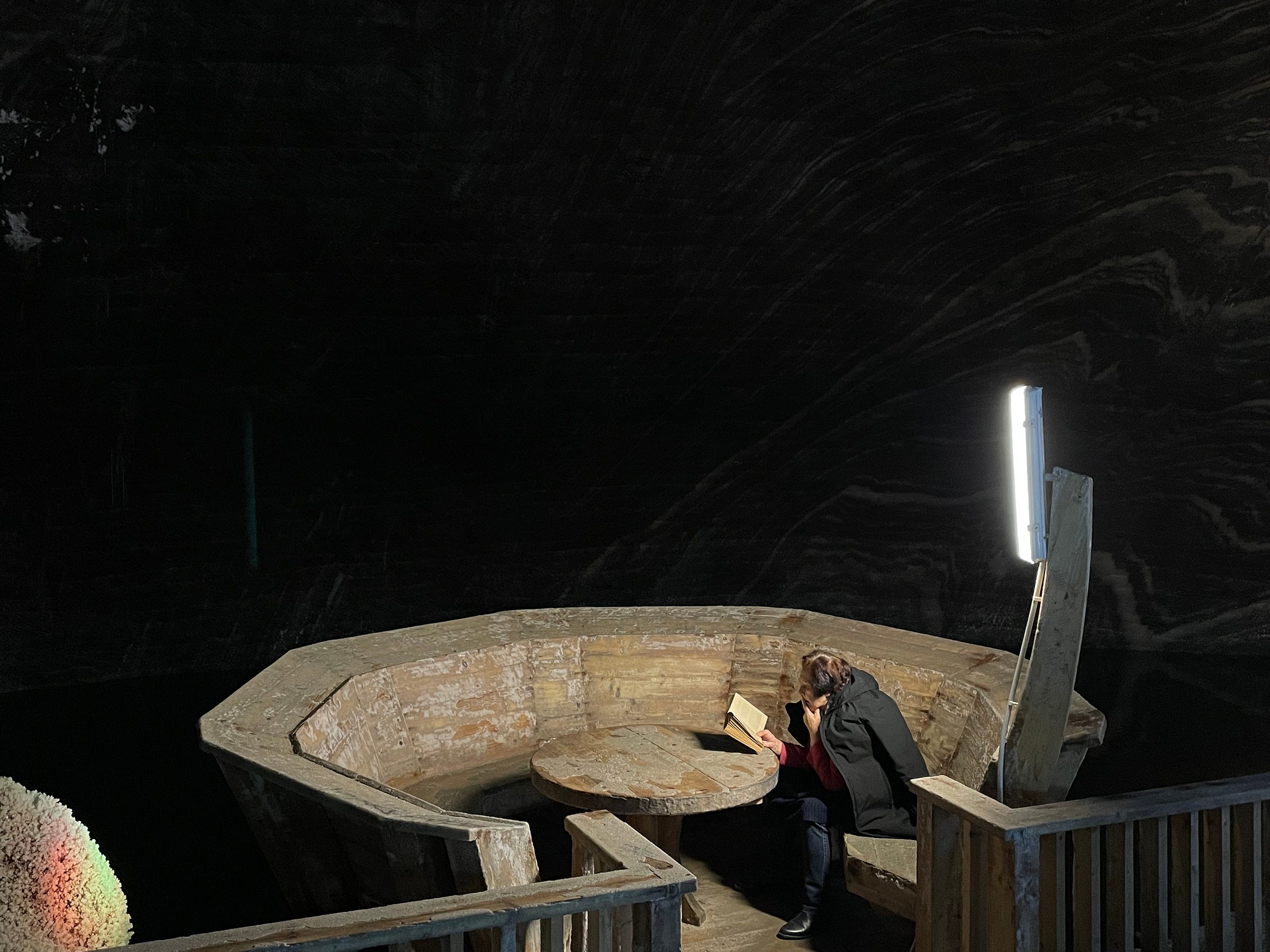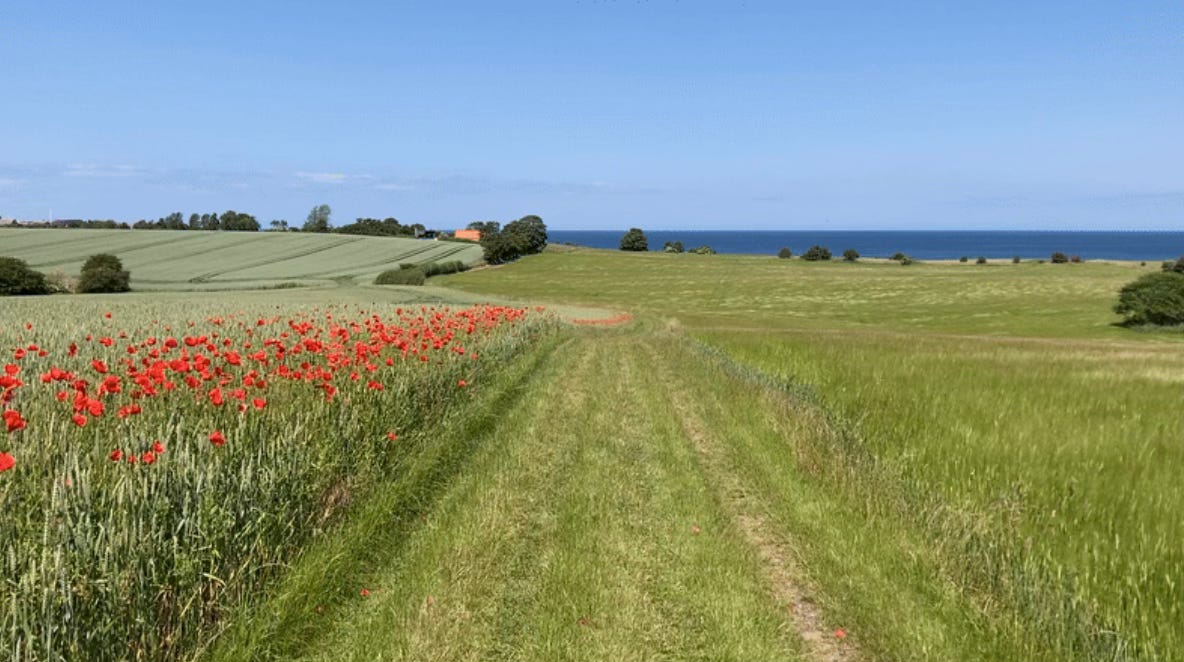In A Gentle Place
“My instinct preceded my intelligence.” ― Clarice Lispector
Salut! I’m Patricia Hurducaș, a Romanian writer and urban explorer based in The Hague. In this post, I explore gentle places and interview Silvia Paizan about her new home on Sjællands Odde, a Danish peninsula. I also invite readers and writers in Edinburgh to join a gathering at the end of August.
“Meu instinto precedera a minha inteligência.”
“My instinct preceded my intelligence.”
― Clarice Lispector, Crônicas
It proves quite difficult to recall the gentlest place I’ve ever experienced, a physical space gentle enough to surpass all others. It feels easier to remember the most overwhelming places: those in which my brain cannot function at its peak, impaired by sensory overload, succumbing to different distractions.
In a world that’s not always the epitome of gentleness, finding such a place feels like drinking a cold glass of water after a long, torrid, physically exhausting hike.
What is a place? Ezio Manzini wrote thoughtfully about place-making in his book Design, When Everybody Designs: An Introduction to Design for Social Innovation and describes a place as a “space endowed with sense,” a space “that is meaningful for someone.” That sense is subjective because when a person endows meaning to something, there is already an imprint of that person’s ideas, stories, and being in that place, in that thing.
Perhaps the definition of “gentle” can bring some sort of common stance in how we experience the gentleness in a place. Gentle, here, is soothing, nourishing, soft, easy, natural, familiar, social, safe, and enriching. I think that:
A gentle place has a story, a story that runs independently, a story that attracts patient, active listeners.
A gentle place provides a two-way communication: there’s a dialogue that doesn’t die out because the input is limitless.
A gentle place has zero tolerance for “pseudo-intimacy”; it is honestly disarming and real.
A gentle place doesn’t, cannot, and will not manipulate our perception.
A gentle place is easy on our nervous system: the inputs, though richly layered, never startle, freeze, or numb us.
A gentle place has a personal aesthetic, one that is both timeless and fresh, organic, attaching itself naturally to the person inhabiting it.
A gentle place leaves room for the unthinkable; we know we are on the verge of something special, something already changing as we enter it.
A gentle place allows us to entertain our inner world.
A gentle place adds to our inner world; we leave feeling acknowledged.
There are a few places that cross my mind as I try to conjure gentle places: San Telmo Museoa in Donostia-San Sebastián, a full physical embodiment of Basque mystery, culture, charm, and knowledge encapsulated in a building that bridges the old and the new.
A more recent gentle place that I experienced is 370 Strand in London, a small and intimate café where I had the best bacon and egg sandwich, and where the owner would play old jazz songs, carrying a form of hospitality which is rare these days.
I can also recall a hidden library in a Waldhaus hotel somewhere in eastern Switzerland, where everything was as gentle on the senses as possible, enveloped in complete quiet, and offering infinite access to ideas through books peculiarly curated, both old and new. The room had the character of an old, timeless story.
I wondered how moving to a gentler place reshapes our world perspective. For those reasons, I was curious to ask my friend and book collaborator, Silvia Paizan, how her new home, a village in Sjællands Odde, Denmark, has been treating her. Silvia is the person who created the beautiful shells and other dividers for my newsletter, and she also designed the logo of The Flâneurs Project. She recently left Sibiu, Romania, behind and started a whole new life abroad.
Interview about Sjællands Odde with Silvia Paizan
Sjællands Odde is a 15 km‑long peninsula in northwest Zealand, Denmark. The peninsula has a distinctive maritime microclimate with lots of wind and very clear light, which has attracted painters and photographers over the years.
Why did you choose to move from Sibiu, Romania, to Sjællands Odde in Denmark?
Silvia: I was longing for another way of life, and I couldn’t find it (or couldn’t make it work) in Sibiu. I felt like a plant cutting in a jug of water, ready to be planted. I never thought I’d feel at home in rural Denmark, or anywhere in Scandinavia, really, but during a volunteering project I did last autumn, I felt a deep sense of peace and belonging I’d never felt before. Here, I found good soil. I’ve only been in Sj. Odde for a bit over six months, so I can’t say yet if I’m growing roots in a pot, in a garden bed, or in an open field. I hope it’s a field.
Is there a spot in Sjællands Odde where you instantly felt “this is home”?
Silvia: This way to the sea.
In your eyes, what makes Sjællands Odde a gentle place?
Silvia: The people. I expected to find a cold & reserved country, and I found peaceful, generous & kind people. They have trust in others, have respect for personal space, and don’t push you to be someone you’re not - in Romania I constantly had to protect myself from misogynism and other pressures. I also sometimes wonder if the place itself is gently guiding us to let our guard down, there’s something magical in the air around here.
What has living there taught you so far, about the peninsula / village or about yourself?
Silvia: Living here has shown me the sadness and fear I’ve been pickled in, and the heaviness that so many Romanians have been carrying on our shoulders, unaware. I’m learning to squeeze that sadness out, to trust my neighbors and to feel the ground beneath me. There’s a lot of unlearning to do. I still have old skin to shed, what kept me out of trouble in the past is now keeping me stuck.
I’m unlearning to tip-toe around people, afraid to disturb, and learning to make my presence felt. Vice versa is also true: all the useless things I did before are now making my life possible: that clay building workshop I did back in 2011, all the cooking and DIY videos I binge-watched, my endless tinkering and fixing things around the house, my silly drawings.
Could you share a photo, sketch, or any creation that sums up how this new home feels for you?
Thank you, Silvia!
In a world increasingly less gentle on the senses, safety, and imagination, there’s a lot of comfort knowing that such places exist, as long as we keep searching and asking for them. I hope they provide us with much-needed hope, nourishment, and agency in ungentle times.
Thank you for reading. As always, I welcome your stories.
I will revisit Edinburgh at the end of August, over a weekend between the 29th and the 31st, and I would love to connect with readers and writers / storytellers.
My good friend Alina Jitari and I are working on a project involving myths and legends in overlooked, remote Romanian places, and we’d love to meet people who write, or simply love, a good story.
Edinburgh always feels like a calling, even after multiple visits, so I’m grateful and excited to plan a return.
Patricia






